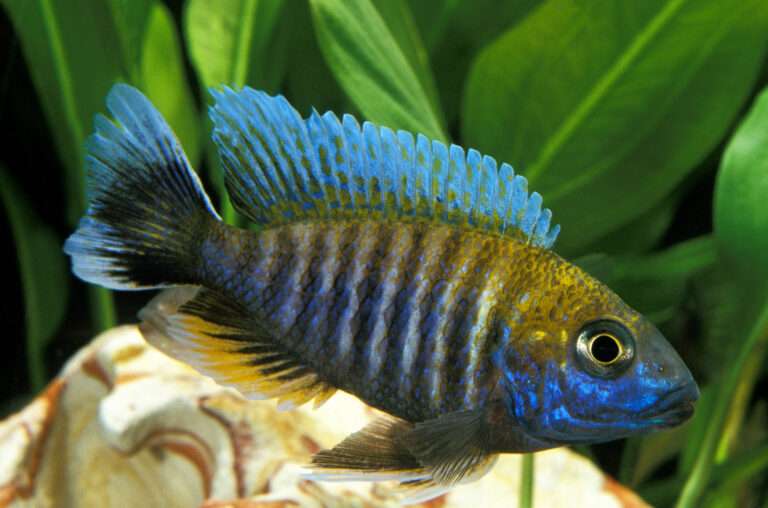
Size
29 inches
Physical characteristics and behavior
The butterfly peacock bass averages 12 to 14 inches but can grow to a maximum length of 29 inches (740 mm) (300–360 mm). The body and fins are orange, yellow, green, or pale red. The three vertical black stripes along the body’s sides stand out the most. These lines may disappear in older fish because they age. The black spot with the golden halo that gave rise to its well-known name. This region of the caudal fin resembles peacock feathers.
As Pet

- Tank Setup
The peacock bass can reach adult lengths of nearly thirty inches, making upkeep a challenge for most aquarists. Even so, maintaining the fish won’t be too difficult if you have a fish tank big enough to accommodate its inherent territorial aggression. For the peacock bass, you should get an aquarium that is at least 70 gallons in size. Aquarists who want to keep 2-inch juvenile and fingerling peacock bass may decide to buy 30-gallon fish tanks. As the fish grows, though, this will necessitate the purchase of a new tank, which will be costly.
The majority of peacock bass owners choose tanks with a maximum capacity of 180 gallons so they may keep many fish without restricting their room and, consequently, growth. When raising young fish, you can keep the aquarium indoors, but as they become older, an outdoor setting is best. The enormous size of their preferred fish tank will fit here just fine.
Peacock bass are moreover inherently athletic and frequently jump out of their aquariums. Thus, a cover is necessary to stop them from jumping out of an aquarium. You will require sand or gravel for the tank’s bottom decorations. This is so that peacock bass may filter sand for insects, shrimp, and other small prey in the wild. For your fish to have plenty of hiding places, you should also add ledges, rocks, and vegetation.
- Water Parameters
The water in the aquarium should be kept as close as possible to the conditions in the species’ natural habitat. Ideal conditions include temperatures between 72 and 82 degrees Fahrenheit, water hardness of about ten dGH, and a pH of between 6 and 8.
- Diet
Either the peacock bass is a voracious eater and will try anything that is the same size as it or smaller that comes within striking distance. In the wild, it feeds throughout the day with a frenzied appetite and quickly, using speed to get its prey. It consumes live items such as fish, insects, and occasionally rodents. The peacock bass has been connected to declining populations of alien species like the spotted tilapia because of its love for fish.
Table





